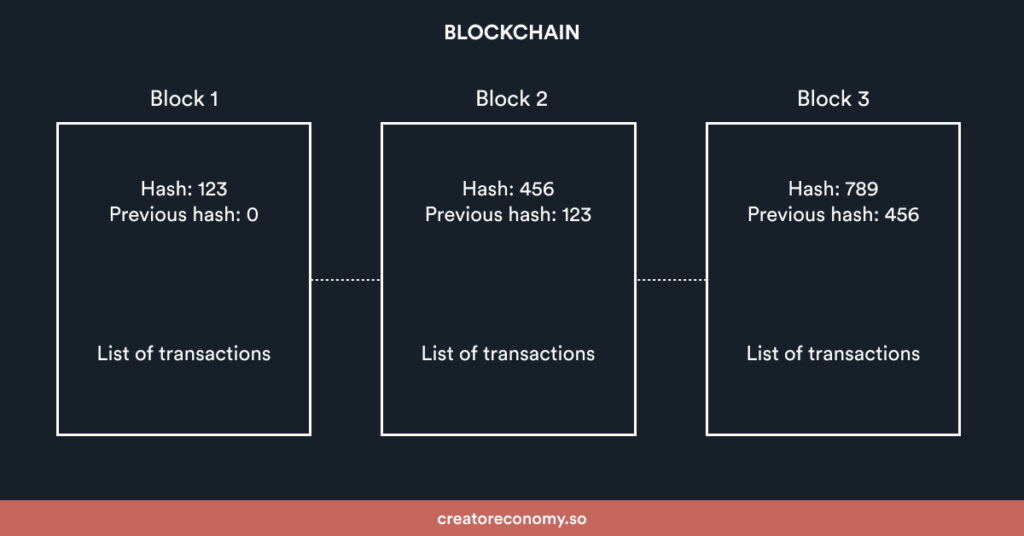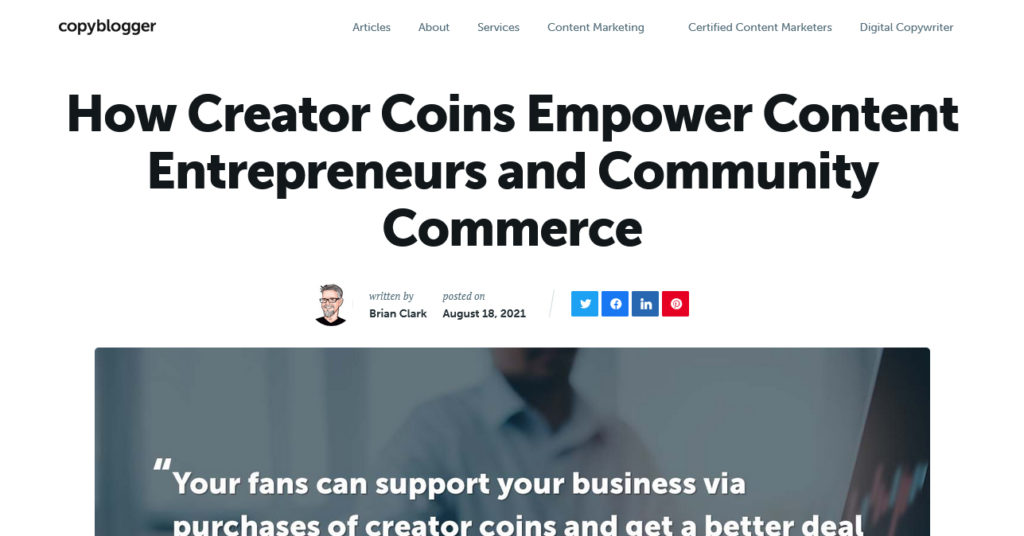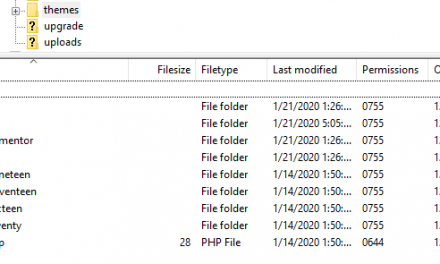Web3 is a buzzword that you can hear on many corners of the Internet these days, including the WordPress sphere. Rumor has it that it will upend how we do business on the and change the Internet itself.
Since WordPress is an integral part of the web (*cough* 40+% market share *cough*). Therefore, the question is less if and more how it will impact our favorite CMS. There was even a talk on this very topic by Dave Lockie at WCEU 2022.
To prepare for how Web3 will impact WordPress and to get ready for it in general, we will take an in-depth look at this topic in this blog post. First, we will go over what Web3 even means, how differs from the current web, and existing problems and challenges. Then, we will examine what possible applications it offers for WordPress. Finally, we will go over Web3 plugins that you can already use, and offer additional resources for more information.
First Things First: What is Web3?

Alright, let’s first settle what we are even talking about when we say Web3. As is probably quite obvious, the name is based on Web 2.0. That’s the moniker adopted for when user-generated content became a major part of the Internet, especially through social media networks. Consequently, Web3 denotes the next phase of what the world wide web will look like.
What’s behind it?
Well, the big theme of Web3 is decentralization. Currently, many web activities take place on servers owned by large corporations. Think Meta, Amazon, TikTok, or Tencent.

That also means a lot of the value created through user-generated content ended up in their hands. They monopolized the ability to monetize it, while the original creators don’t profit as much from their work. As we know, this also created a whole lot of problems with user privacy and censorship.
In Web3, we are seeing a move away from that. It places a premium on technologies that are based on peer-to-peer interaction and where information is distributed instead of residing in a single-owned place.
Doing so allows people to coordinate in new ways and more directly instead of via gatekeepers. This includes the ability to transfer value independent of centralized institutions like banks or even nation states. Basically, Web3 creates a parallel economy with its own rules and institutions.
Enter, The Blockchain
The main technology that makes all of this possible is the blockchain.
In case you don’t know, it’s a form of database that’s spread out across an entire network of computers. It is called this because, unlike classic databases, its information is organized in blocks instead of tables. Each block only holds a certain amount of data. When it is full, a new block is created and linked to its predecessor, thus forming a chain.

This automatically creates a timeline of what happens and a record of data changes. At the same time, because of its distributed nature, the data is available at different nodes (meaning computers) inside of the network, making it much much harder to corrupt. This setup offers a number of benefits:
- Security – Decentralization eliminates the danger of a single point of failure. The data is not all physically in one place (e.g. a single server farm), that way, it can’t all vanish at once.
- Trust – Blockchain records are unalterable and therefore automatically trustworthy. Even if you could change them in one place, the other nodes would still contain the original data.
- Transparency – Blockchain records are publicly accessible from every node by anyone, if you have the right decryption key. That way, they can function as a public record of transactions and ownership.
In short, a blockchain allows you to record information in a more secure way than in a centralized system.
Applications of Blockchain
The technology forms the basis of a number of things that you often hear about when the conversation moves toward Web3:
- Cryptocurrencies — Bitcoin is the most popular of many different cryptocurrencies. They offer an alternative way for storing and transferring value.
- NFTs — This acronym stands for “non-fungible tokens”. They are a blockchain-based way to record ownership over digital assets. This gives you the ability to own parts of the Internet, like images, in-game assets, or videos. You can also resell them.
- Smart Contracts – These also run on blockchain technology and are used, for example, to buy and sell digital assets.
There is a whole lot more here that you can get into (e.g. DAOs, DeFi) but this will do for now. The point is that blockchain provides new ways to do commerce, transactions, communication, and ownership. It will have great impact on how the web works and how entrepreneurs and companies do business.
Of course, it’s not without its challenges. The technology is still in its infancy. There are many technical challenges and bottlenecks still to overcome. Plus, there is still a lot of Wild West mentality going on with thefts through code flaws and lots of scamming. We will see where it leads in the future.
Web3 and WordPress
Alright, now that we have at least an idea of what Web3 is about, let’s turn to its effect on WordPress. In general, Web3 is very much aligned with WordPress’ mission of democratizing publishing and commerce. But what are some concrete examples of how the two could work together?
1. Protecting and Selling Content
Publishing content is at the heart of WordPress. It started as a blogging platform and is now a full-fledged content management system and website builder.
Blockchain and Web3 technologies can offer new ways of protecting and monetizing that content. For example, in the future it might be possible to mint your written, visual, video, and audio content as NFTs. That way, it is protected via a blockchain timestamp, showing a clear chain of ownership.
This could go so far as to be used as a signal for search engines for who is the original creator. This would make content scraping and flat-out stealing a thing of the past. WordProof is an existing project that tries to do just that.

Turning content into NFTs would also make it possible to sell it and let creators earn money with what they produce. You may even be able to build in royalties. That way, if your work gets sold on, you could still benefit from it.
This isn’t too far-fetched or niche. Instagram is already testing the sale of NFTs on their platform and the same could come to Facebook soon. That’s basically instant mass adoption.
2. Rewards and Loyalty Programs for Community Building
Besides protecting and selling digital assets via blockchain technology, Web3 also offers creators better opportunities to build their own communities and ecosystems. For example, you can already create your own currency. It’s something that, for example, Brian Clark (former StudioPress founder and CEO) is betting big on.

By creating your own digital money, you can allow members of your audience to exchange them for unique experiences, discounts, and more. It’s a good way of fostering loyalty. In addition, you can create gated content that is only accessible with the right token, much like we already do with membership sites.
However, it can also take other shapes. For example, over at Web3 WP, David Lockie and Aaron Edwards are floating the idea of providing NFTs as reward to contributors of all major WordPress releases. This could be an alternative or additional way to incentivize people to contribute to the WordPress project besides existing initiatives like Five for the Future.
3. Increased Trust and Security
Finally, Web3 technologies could offer new ways of dealing with certain online security concerns. You could use blockchain timestamps as a transparency tool, to show what has changed in your content and when.
This could make sense especially for ecommerce websites, for example, for your refund policy. Buyers could be sure that sellers won’t change the terms and conditions on them after their purchase because they could always prove what policies were in place at the time.
Web3 WordPress Plugins You Can Try Out Right Now
If you want to inject a little Web3 magic into your WordPress site already, here are a number of plugins you can use to do so.
1. Unlock Protocol

This is a membership plugin for monetizing content in a permissionless way. It adds a new block to your website that you can use to obscure content and make it unlockable with a crypto wallet like MetaMask. Users can purchase the unlock key via cryptocurrency. It’s a great way to monetize your content in a Web3 way.
2. EthPress
This plugin adds an option to the WordPress login page to log in via a crypto wallet. You can use MetaMask or any other WalletConnect-compatible wallet and doing so creates a regular WordPress account in the background.
The plugin supports custom hooks to move users to a certain page after they log in. It also has a pro version with additional options. The NFT Access add-on allows you to restrict parts of your site to owners of a certain NFT token.
A similar alternative is Web3 – Crypto wallet Login & NFT token gating.
3. WordProof Timestamp

This Web3 plugin allows you to automatically timestamp WordPress content on any EOSIO blockchain. It also contains the ability to offer a certificate for download and make the changes public. This gives you copyright protection and transparency for users.
4. LikeCoin

LikeCoin helps you to register content on a blockchain metadata registry, publish it as an NFT, and sell it. The plugin gives you an International Standard Content Number (ISCN) and also lets you register it in the file system for use and distribution. In addition, you can earn tokens for using the plugin that you can change into other (crypto)currencies or trade.
5. Web3 Donations by DePay

The next contender let you accept donations in P2P (no middleman) cryptocurrencies. It adds a customizable donation button to your WordPress website as a Gutenberg block. It’s customizable via CSS and supports multiple blockchains.
The plugin is compatible with MetaMask, Coinbase Wallet, and 100 other crypto wallets via WalletConnect. It also does on-the-fly conversions and charges a 1.5%-transaction fee.
6. Cryptocurrency Payment Gateways
Besides the above, there are also a number of plugins that provide payment gateways for cryptocurrencies, such as:
You can find more plugins here.
In a Nutshell: WordPress and Web3
Web3 is continuing to make strides and is changing how we interact with and do things on the Internet. WordPress is not exempt from that.
The technology already offers the possibility to protect your content, offer alternative login options, and accept donations. More option will only arise in the future.
Hopefully, you have learned enough in this primer on Web3 and WordPress to take steps for your own website. At this point, it’s still a bit of a fringe thing. We are not yet at the point where it has created a use case that is practical for most people.
In addition, it can be a lot to wrap your head around. If you want you can go deeper, good starting points are the aforementioned Web3 WP, RabbitHole, Creator Economy, and this resource thread on Twitter. In addition, we’d love to hear your thoughts!
What possibilities do you see for Web3 as a whole and in combination with WordPress? What are your concerns? Please share your thoughts in the comments below!











